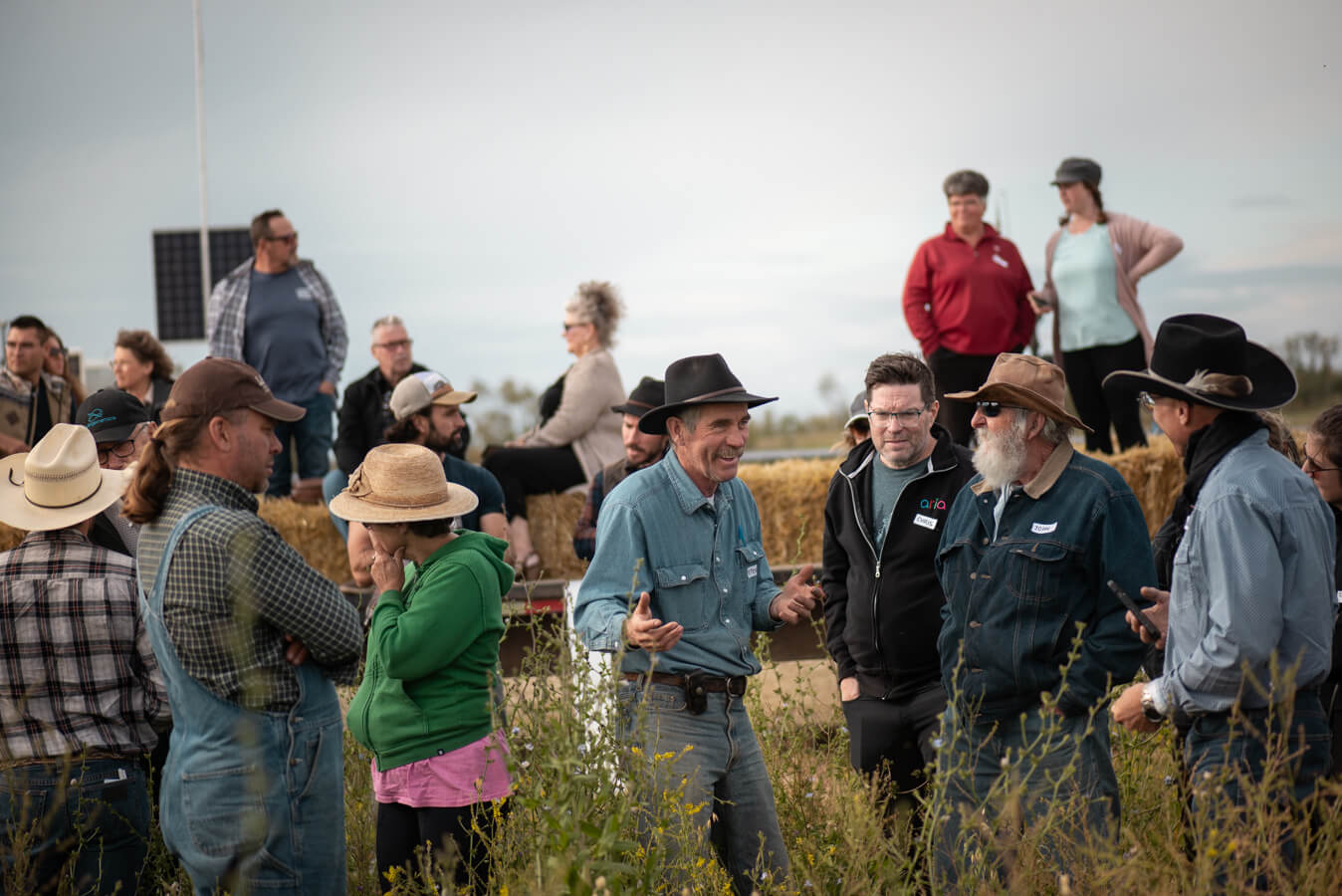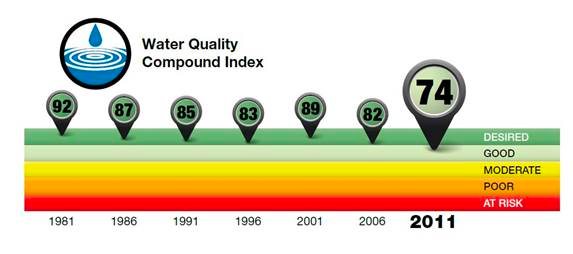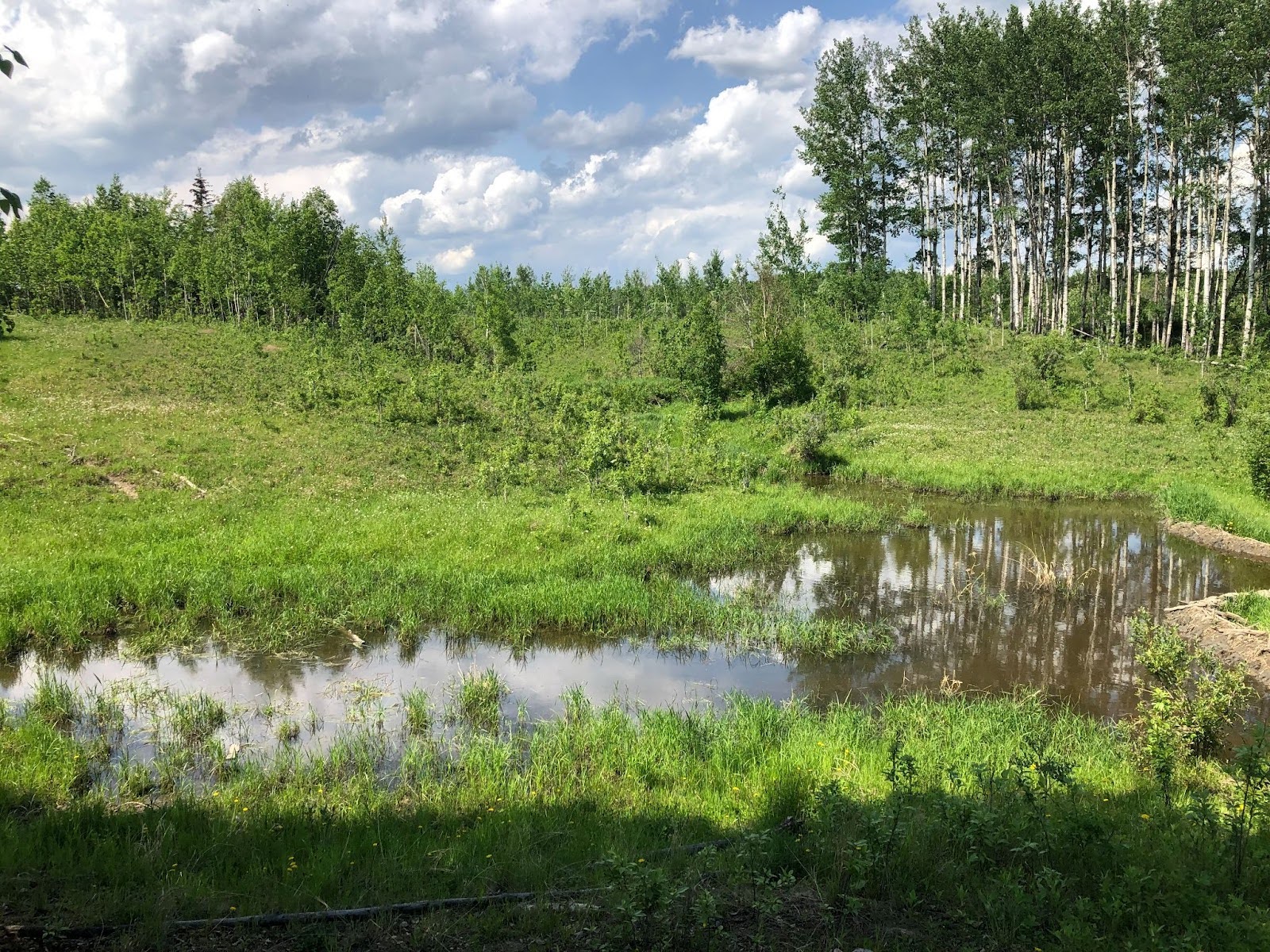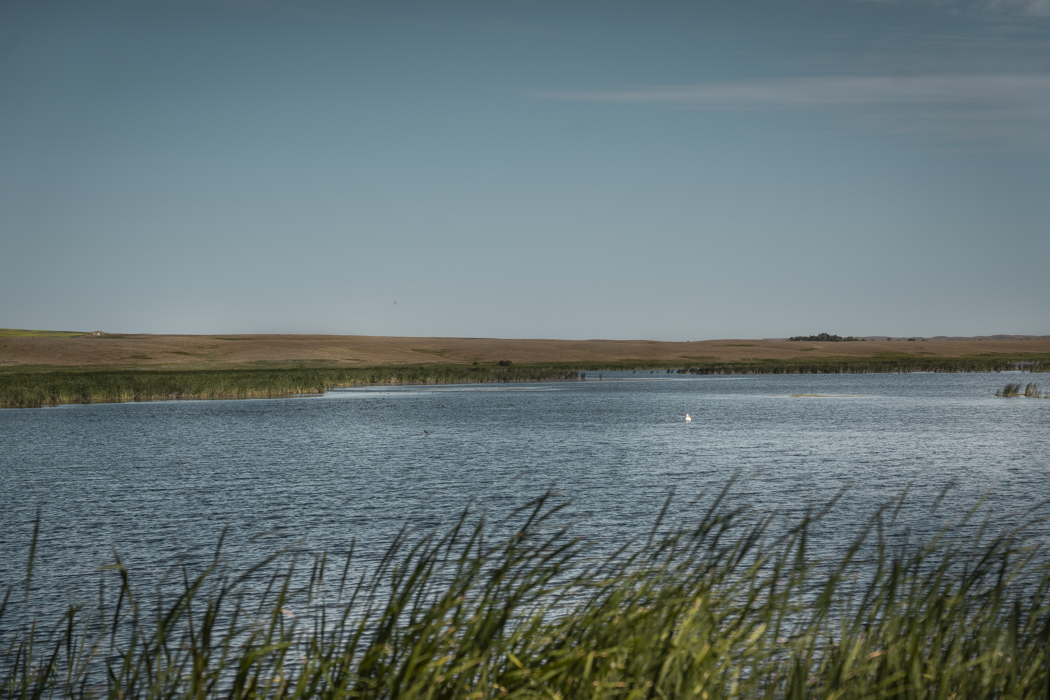As 40% of the world faces water scarcity, good water management is a key part of regenerative agriculture. Effective irrigation, water collection infrastructure, and proper farm design are important for water conservation.
Regeneration Canada’s 10 principles of regenerative agriculture include ‘safeguarding water cycles’ as a key response to global water scarcity which currently affects 40% of the world. With climate change exacerbating flood and drought events, the need for sustainable water management in agriculture has never been more urgent.
During the Stories of Regeneration tour in 2023, Regeneration Canada’s team visited Peony Farms: a regenerative ranch located northwest of Lacombe in central Alberta, run by Craig Cameron, his wife Miriam, and father-in-law, Peter.
After years of conventional agriculture protocols, the family reassessed their approach to farming when Craig and Miriam’s daughter experienced health challenges that required higher-quality food. Today, Craig and Peter raise Piedmontese beef cattle in a forage-finished, regenerative system. They market the nutrient-dense meat online through their website and sell it at local food shops in Edmonton and Calgary. While beef is their primary product, soil health and nutritional value are the drivers for ranching the way they do. Part of their regenerative framework focuses on the importance of safeguarding the water cycle to ensure that their land will be productive and healthy for generations.

The Role of Agriculture in the Water Cycle
Agriculture both influences and is influenced by the water cycle. It is the world’s largest user of freshwater, accounting for approximately 70% of total withdrawals. In Canada alone, agricultural producers utilized an estimated 2.2 trillion litres of water for irrigation in 2022.
When poorly managed, agricultural practices can degrade water quality through pollution, erosion, salinization, soil erosion, and nutrient leaching, through the runoff of fertilizers, pesticides, and livestock waste into surface water bodies.
In contrast, regenerative agriculture offers a sustainable model that enhances water cycle processes by mimicking natural ecosystems–improving water infiltration, groundwater recharge, and water quality.
Threats to Water Cycles in the Agricultural Context
Agriculture can affect the physical environment in complex ways through land and water management practices. An awareness of these issues is key to charting an alternative course aligned with water stewardship. Key farming practices that currently endanger healthy hydrology include:
● Land conversion: Transforming lands from their natural ecosystems like bogs, wetlands, forests, or native grasslands disrupts water cycles–impacting habitat, carbon storage, and water retention. Wetlands in particular store substantial soil carbon due to dense vegetation and periodic saturation.
Across the prairie landscape, slough drainage is a common practice to expand arable land. At Peony Farms, Craig and Peter do not drain their sloughs. In drought times, they’ve noticed that the land around the sloughs remains productive and green due to the capillary rise of water moving upward in the landscape.
● Misuse of fertilizers and pesticides: When fertilizers and pesticides are applied incorrectly and in large doses, the risk of serious impacts to water quality increases exponentially––specifically through runoff and eutrophication. In recent decades, the decrease in animal agriculture in Canada has led to an increase in annual cropping, necessitating higher levels of fertilizers and pesticides.
● Irrigation mismanagement: Inefficient irrigation practices contribute to water waste, salinization, and groundwater depletion, along with runoff pollution from fertilizers and pesticides.
● Soil erosion: Intensive practices such as tillage, monocropping, and overgrazing lead to soil erosion, impairing water quality, fertility and water infiltration rates.

Regenerative Land Management for Water Stewardship
When working to regenerate water cycles, the overarching goal is to slow, spread, and sink water. Slowing the speed at which water travels across the soil surface reduces the risk of erosion. Spreading water across a larger surface area allows more water to penetrate the ground and infiltrate into the soil. Sinking water refers to the deep infiltration of water, aiding in the replenishment of groundwater sources.
Key practices include:
● Keeping soils covered: Covered soils are better at regulating temperature fluctuations and are less prone to soil water evaporation. Maintaining continuous soil coverage through cover crops, crop residues, groundcovers, or mulch, prevents erosion and runoff.
● Preserving wild areas: Preservation can increase biodiversity and provide a myriad of ecological services that will, in turn, benefit the producing sections of the farm.
Beavers can change landscapes and significantly increase surface water and groundwater recharge rates. At Peony Farms, Craig and Peter have resident beavers that dam seasonal creeks, helping to retain water on their land rather than flowing away.

● Reducing or eliminating the use of fertilizers and pesticides: If crop inputs are required, farmers should apply them responsibly and minimally. Animal manures and compost, which build water-retentive organic matter, aggregate soil, and increase infiltration, are viable alternatives to chemical fertilizers, but should also be applied with care. Cover crops, especially legumes, can also contribute to soil fertility and pest management.
● Increasing soil organic matter: Soils rich in organic matter act as natural reservoirs, efficiently absorbing and storing water, thus mitigating the risks of flooding and nutrient runoff while replenishing groundwater sources. When it rains, these soils absorb water more readily, allowing the soils to slowly release the water over time, increasing crop resilience during times of low rainfall.
To boost soil organic matter and improve the soil’s water-holding capacity, land stewards can leave crop residues in fields during fall for decomposition over winter, incorporate compost or animal manure as organic amendments, integrate cover crops, implement managed grazing practices, and minimize tillage.

● Integrating perennials: Trees planted among crops or livestock enhance biodiversity, build soil carbon, and facilitate deeper water penetration through extensive root systems–while their canopy provides shade and windbreaks, reducing evapotranspiration. Tree roots also stabilize soil, prevent erosion, and increase the land’s capacity to store water, while their leaf litter builds organic matter. Additionally, the deep taproots of perennials redistribute moisture from lower soil layers upwards through a process called hydraulic redistribution. This makes water more available to shallow-rooted crops, increasing drought resilience.
At Peony Farms, preserving tree rows along field edges and slopes plays a crucial role in facilitating deep water infiltration, transpiration, and contributing to rain cloud formation.
Together, these effects significantly expand the land’s capacity to store rainfall. Trees, shrubs, and other perennials additionally moderate extreme temperature fluctuations, creating an amenable microclimate.
● Effective irrigation:
○ Opt for drip tape irrigation when suitable to minimize water loss through evaporation.
○ Understand the specific water needs of your crops to avoid over- or under-watering.
○ Implement an irrigation schedule tailored to your crop, considering soil composition and local climate conditions. Adjust the irrigation schedule in response to changing weather patterns.
○ Regularly monitor soil moisture levels to assess the effectiveness of your irrigation methods and schedules.
● Plant selection: Prioritize native and drought-tolerant plants with deep root systems that can help to absorb and retain water in the soil.
● Earthworks: Dig contour ditches or swales along elevation contours of the land to intercept surface flows and allow water to soak into the soil. Swales can direct water to ponds or fields. Ponds can store rainwater and runoff, and can serve as valuable water sources for irrigation and wildlife habitat.
Urban Land Management
Integrating local food production, green stormwater infrastructure, residential rain harvesting, water efficiency retrofits, green roofs, and riparian buffers around urban waterways can aid in safeguarding this vital resource. Transitioning to regenerative land management practices aligned with the water cycle is crucial for our collective future, regardless of scale or landscape.
Safeguarding water cycles through regenerative agriculture practices is not just a responsibility: it’s an opportunity to reshape our relationship with the land and secure a sustainable future. As the largest consumer of freshwater, agriculture profoundly impacts the water cycle. However, regenerative practices offer hope by mimicking natural ecosystems and promoting healthier hydrological processes. Whether in rural or urban settings, the principles of water stewardship resonate, highlighting the interconnectedness of our actions with the health of our planet.
To dive deeper into water cycling on farms, consider exploring our webinars on “Altering Landscapes to Slow, Spread and Sink Water” and “The Soil-Water-Climate Connection“.
To know more about regenerative practices at Peony Farms, watch the short film interview and listen to the podcast episode with Craig Cameron and Peter DenOudsten, and watch the “Regenerating Nutrition” webinar recording with Craig.
Join the regenerative agriculture movement! Stay updated with our Principles of Regenerative Land Management blog series by subscribing to our newsletter and following our social media channels. We are delighted to have you on this journey with us!
If you have any questions or comments about the topics covered in this blog post, please contact our Education & Research Manager at: paige@regenerationcanada.org. If you have questions specific to the Stories of Regeneration campaign, please connect with our Campaign Manager at: alieska@regenerationcanada.org.




